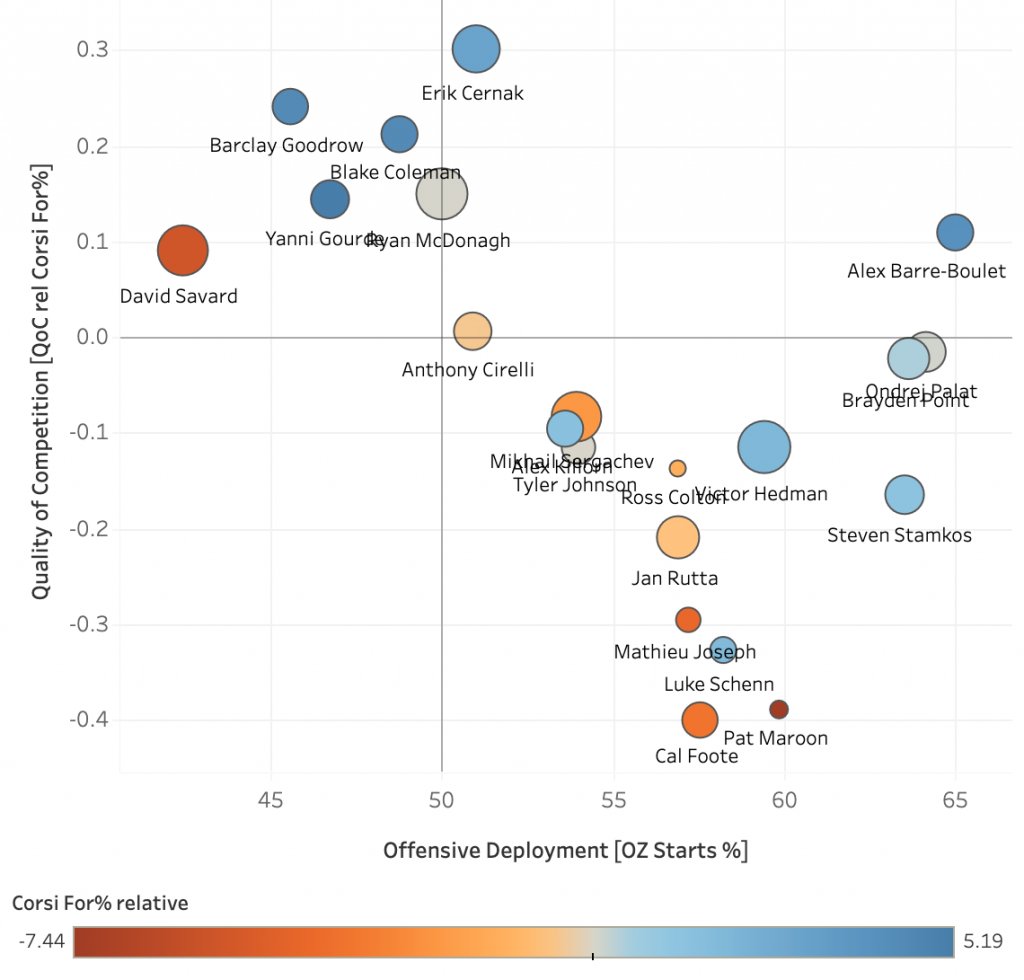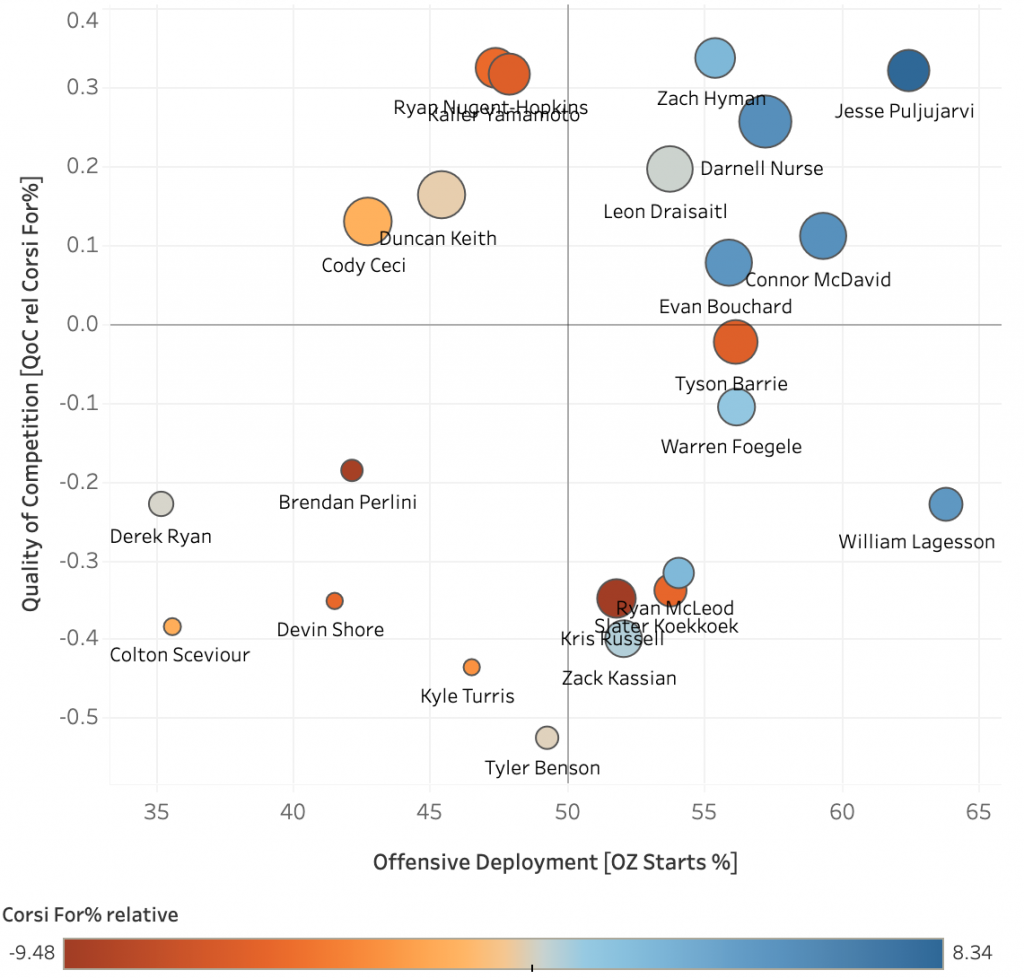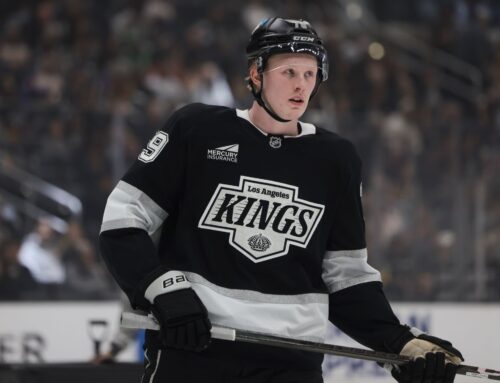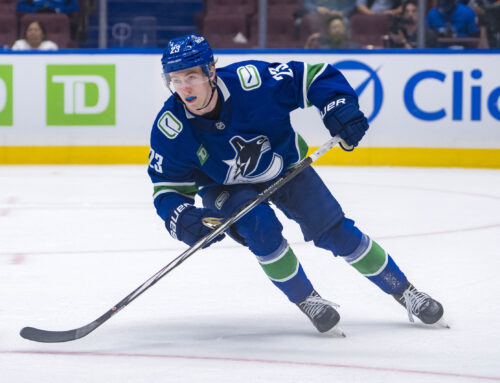Welcome back to The Journey, where we follow hockey prospects and their paths to the NHL, providing fantasy predictions and analysis along the way.
This week, we'll be taking a closer look at what to expect from the Edmonton Oilers for the rest of this year and the coming few seasons. The addition of Evander Kane and the recent coaching change from Dave Tippett to Jay Woodcroft seems to have added a physical element, relaxed the players, and sparked some new life in a team that should be far more dynamic than they've shown since their strong start earlier this year.
There are a couple reasons why the Oilers are particularly interesting from a prospect standpoint: they have a ton of high-upside prospects, and their two megastars produce a Crosby-Malkin effect where in theory any of those prospects could absolutely explode if they end up clicking with either Connor McDavid or Leon Draisaitl. First, we'll do a brief survey of the timeline and potential upside of the Oilers' top prospects, including where they might fit into the lineup. Then we'll examine whether or not the megastar effect in Edmonton is actually real. Continuing the Pittsburgh analogy, as exciting as Chris Kunitz and Bryan Rust were, there was also a revolving door of busts like Jason Zucker that just never seemed to pan out.
NHL Prospects/Young Players
Evan Bouchard (26 points in 47 games)
Stud. Acquire him if you can; don't sell him if you have him. He's bumped Barrie off PP1 and looks primed for a star-level career.
Philip Broberg (1 point in 12 games)
Although Broberg is only 20, he spent his D+1 and D+2 years in the SHL, the top Swedish men's league, where he scored 21 points in 89 games. That didn't really move the needle and raised questions about his ultimate upside but that's an impressive amount of professional experience for such a young player. He's always been known for his elite speed, and earlier this year in the AHL he was finally able to translate that speed into meaningful production with 18 points in 26 games, which was extremely encouraging for Oilers fans. With Bouchard looking like a bonafide #1 defenceman and multi-cat mainstay Darnell Nurse signed long term, there seems to be a spot opening up for Broberg on the second pair and second power play once Duncan Keith and Tyson Barrie move along.
Tyler Benson (1 point in 21 games)
After scoring basically a point per game over three AHL seasons, the 23-year-old Benson has finally stuck with the big squad this year but has only one assist so far to show for it. Deployment data is a bit skewed with the coaching change in terms of predicting what the rest of the season will hold for him, but under Tippett, Benson was the most heavily sheltered player on the Oilers by a fair margin. All his minutes were in the bottom six and he saw very few offensive zone starts—also no exposure to McDavid or Draisaitl. He also has been healthy scratched a number of times, including their most recent win over L.A. Before that, he saw about seven minutes of action in two games under Woodcroft. Benson will need better opportunity to make an impact in fantasy, but his AHL production shows promise.
Kailer Yamamoto (16 points in 47 games)
This column covered Yamamoto in last month's edition of Sink-or-Swim. The verdict was basically that his outlook isn't looking great but he's likely still a few seasons away from hitting his 400-game Breakout Threshold as an undersized player. He'll likely be a difficult own in fantasy but he has shown excellent potential in the past and you never know. If you're willing to roll the dice, he's a decent boom-bust stash.
AHL Prospects
Dylan Holloway (5 points in 11 games)
Holloway is probably the Oilers' most exciting prospect not yet playing with the parent club. After Edmonton selected him in the middle of the 2020 first round, Holloway blew up the NCAA in his D+1 year, finishing 5th in the nation in scoring alongside eventual Hobey Baker Award winner Cole Caufield with 35 points in 23 games as a sophomore. He's had a tough D+2 year, however, missing the first few months due to wrist surgery and currently enduring a six-game scoreless streak in the AHL. He did score five points in his first five games right out of the gate, however, so he'll likely sort things out down the stretch.
Whether Holloway sees a few games at the end of this year or finishes the campaign with Bakersfield, Holloway will likely join the Oilers before too much longer. He's a speedy, two-way winger who sees the ice well and thinks the game at a high level—in theory, his skillset will blend very well with Edmonton's big two and he could walk right into meaningful, sheltered minutes in a top six role.
Here's his first pro goal; he swoops in and buries the rebound:
Raphael Lavoie (23 points in 38 games)
Lavoie's star profile has fallen from 17% in his D0 year to 4% now in his D+3 campaign. He's now profiling like a Maxime Talbot or Brett Connolly middle-six type instead of a dynamic top-line talent. As a bigger player (6-4, 200 lbs), Lavoie will likely require about five NHL seasons to really hit his stride and show us what he's capable of. While that likely renders him rosterable only in deeper leagues for fantasy purposes, he's still trending to play an important depth role on the Oilers—secondary scoring has been a huge problem for this club for years now, and Lavoie has been known for his goal-scoring stretching back to his final year in the QMJHL (20 goals in 25 games). Look for him to make the jump full-time either next year or the year after.
Cooper Marody (35 points in 32 games)
Marody, a former U of Michigan product, has been a top scorer for Bakersfield for the past several seasons (155 points in 162 games) but has only seen seven NHL games to date (one assist). Oilers fans are clamouring for him to get a meaningful shot with the big club this year, and he seems like perhaps the strongest candidate to see a call-up. The question with the 25-year-old will be whether or not he can translate that impressive AHL production and prove he's more than a career AHLer. Given his age, Marody does not project as a star at this point. He's an average skater with a solid but not exceptional all-around skillset and may fit better into the Oilers' middle six than alongside their top stars.
Junior Prospects
Xavier Bourgault (43 points in 25 QMJHL games)
Bourgault was highlighted in this column as a player to watch at the World Juniors for Canada. He came into the tournament at a goal-per-game pace and was slated to star on Canada's top line. But then he went down with an injury after their first game and shortly afterwards the WJC was cancelled. Look for him to make the jump to the AHL next year, see a few games with the Oilers, and then join them full-time in 2023-24 in a top-six role.
Matvei Petrov (65 points in 42 OHL games)
Petrov's scoring pace has fallen slightly since being highlighted in a Journey article for his high PNHLe score but he's still having an impressive campaign in the OHL as a top performer for the North Bay Battalion. As a former 6th-round pick, Petrov is providing incredible value for Edmonton so far. Because he was in the MHL last year over in Russia and this is his first year in the OHL, his upside is not yet clear and his timeline is likely longer than Bourgault's. If Petrov has another strong year in the OHL next year, he'll then have to audition in the AHL for at least a year before potentially making a push to join the Oilers in 2025-26—unless he surprises and forces management's hand to fast track his development.
Carter Savoie (33 points in 26 NCAA games)
Savoie has also slowed since a torrid goal-per-game pace to open the season with the U of Denver but is still a key part of Denver's attack. He's yet another deep pick (2020 4th round) for Edmonton that is trending really well. Like Petrov, Lavoie, and Marody, Savoie may be best suited for the Oilers' middle six down the road. He'll need at least a year in the AHL as well and will probably be at least a two-year wait until he begins his NHL career.
Tyler Tullio (58 points in 42 games)
Tullio was taken one round after Savoie in 2020 and is likewise projecting to become a high-skill depth piece for the Oilers a couple seasons from now. He's currently providing nearly half (42%) of the total points for the Oshawa Generals, showing that he's able to put a team on his back and drive a line on his own. A brief foray into the top Slovakian men's league last year (13 points in 19 games) showed that Tullio can handle himself at the pro level. Like the other top players in the junior ranks for Edmonton, Tullio should arrive sometime over the next two or three years after honing his craft for Bakersfield.
Big Picture
So how well have McDavid and Draisaitl's linemates performed over the past few years? And which of the prospects profiled here will fit best with them and get the best opportunities? These are big questions with complex answers; two ways to get a glimpse into the dynamics of a line are Individual Points Percentage (IPP) and Corsi For (CF%)—IPP shows how often a player is involved in a goal scored by their team while they're on the ice; generally high-end scorers will live north of 70%. CF% shows how many shot attempts for versus against a line produces while playing together (ie. driving play).
Here are the IPP and CF% values of McDavid and his most common linemates over the past three years:
| Year | CF% | IPP | ||
| 2021-22 | 59.3 | McDavid (81) | Hyman (65) | Puljujarvi (51) |
| 2020-21 | 54 | McDavid (84) | Nugent-Hopkins (46) | Puljujarvi (48) |
| 2019-20 | N/A | McDavid (78) | Draisaitl (80) | Kassian (62) |
It's not surprising that McDavid's line consistently drives play or that the captain has a consistently high IPP. And it's clear that he works exceptionally well with Draisaitl; in 2019-20, the two often played together and finished on a 124 and 127-point pace respectively. That year, the passenger on that line, Zack Kassian, played at a career-high 47-point pace.
Last year, McDavid played separately from Draisaitl much more often and the IPP gap between him and his linemates from 2020-21 shows that he basically put that line on his back and scored at a historic 154-point pace. This year, Jesse Puljujarvi has improved slightly, though he has slowed dramatically after a red-hot stretch back in the Fall, and Zach Hyman has clearly meshed particularly well with McDavid. McDavid's point pace is down this year but his line is over 5% more effective at driving play this year—a significant improvement.
Here's the same data for Draisatl and his most common linemates:
| Year | CF% | IPP | ||
| 2021-22 | 59.3 | Draisaitl (80) | Nugent-Hopkins (54.5) | Yamamoto (51.5) |
| 2020-21 | 54 | Draisaitl (71.8) | Yamamoto (52.5) | Kahun (73.8) |
| 2019-20 | N/A | Draisaitl (80.3) | McDavid (78) | Kassian (62) |
Draisaitl is having a similar season to McDavid's last year—he's carrying his line and that line is dominating play. Yamamoto is a bit like Draisaitl's Puljujarvi in that he's not as involved in the scoring as he should be. Dominik Kahun showed excellent chemistry with the big German last year but is now out of the league altogether.
Another important insight here is that Ryan Nugent-Hopkins also looks like a passenger when playing with Edmonton's top two stars. He is in the first year of an eight-year deal that pays him just north of five million annually. That's a reasonable contract for the production they've been getting from him. But the stats suggest he's not the best fit with either McDavid or Draisaitl. Assuming they don't trade him, perhaps Nuge anchors the third line with Yamamoto. That would leave Puljujarvi on the wing in the top six with three other spots available.
Holloway seems like the most promising prospect in the Oilers' pipeline to step in and thrive in the top six next year. Marody, Benson, and Lavoie seem like strong candidates to start in the middle six as early as next year and see occasional minutes on the top lines. Over the next couple years, look for Savoie, Bourgault, Petrov, and Tullio to join the mix. Hopefully for Oilers fans, at least one of them will emerge as top-six material. The best of the bunch for fantasy is likely Bourgault.
One final thought is that, looking at the Oilers' deployment chart from this year, they're missing the kind of elite defensive checking line that powered the Lightning to their second consecutive Stanley Cup last year. Here is the Lightning's chart from 2020-21. Barclay Goodrow, Blake Coleman, and Yanni Gourde are the dark blue circles in the top left; that means they drove play against top competition with minimal offensive zone starts.

Now here is the Oilers' chart from this season. The top lines and stars are generally driving play (Puljujarvi sticks out in particular) but instead of a Coleman/Goodrow/Gourde line, Edmonton only has Nugent-Hopkins and Yamamoto in that capacity and they are getting absolutely caved in. Same goes for Keith and Cody Ceci. Barrie is a liability despite being sheltered. Edmonton has a ton of mid-level scoring stars in their system but this is an important area in which they're lacking. It'll be interesting to see whether they can address this deficit moving forward.

Thanks for reading! Follow me on Twitter @beegare for more prospect content and fantasy hockey analysis.





 N.J
N.J PIT
PIT OTT
OTT MTL
MTL T.B
T.B DET
DET EDM
EDM S.J
S.J CGY
CGY MIN
MIN WSH
WSH TOR
TOR DAL
DAL UTA
UTA NYI
NYI ANA
ANA
